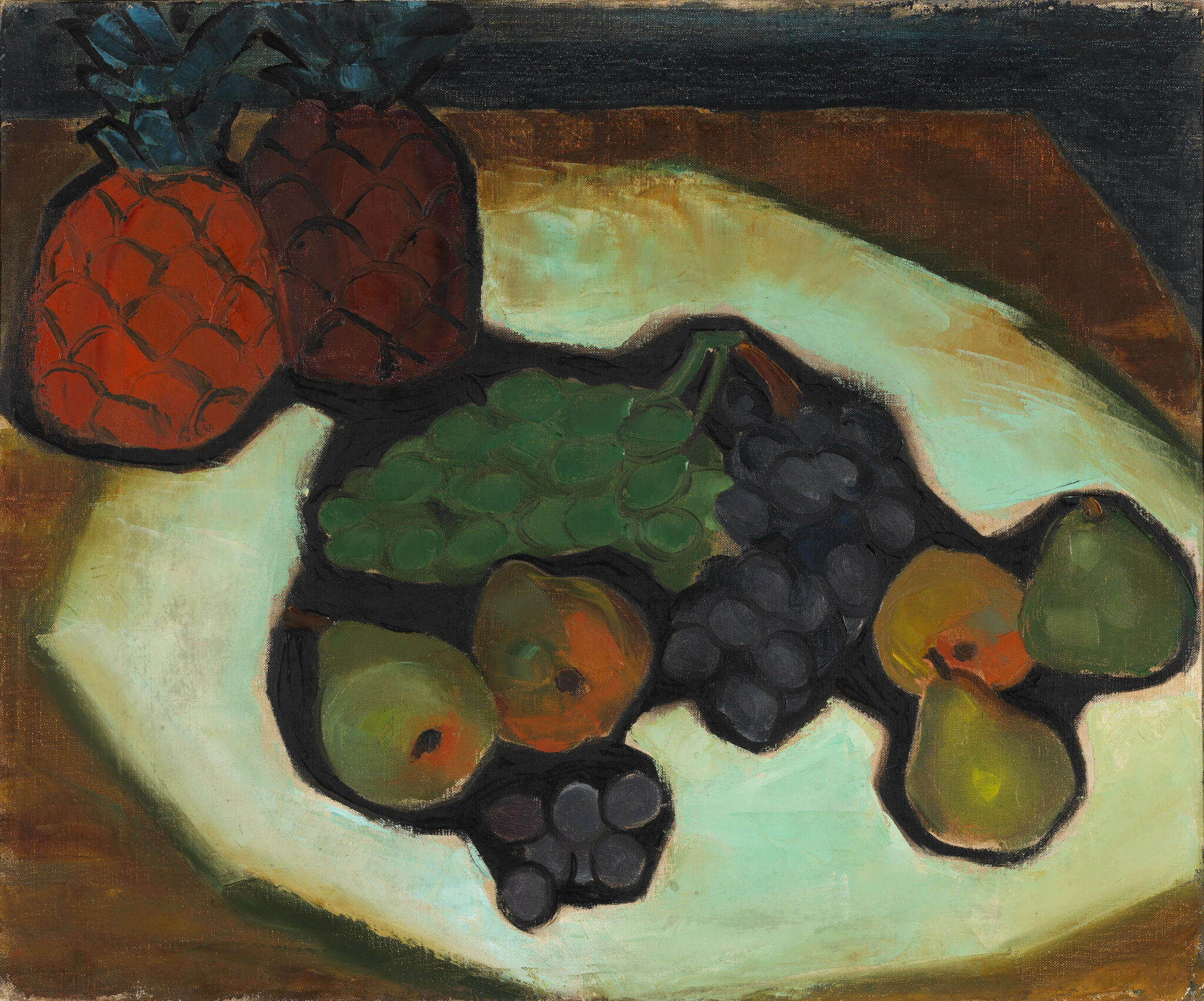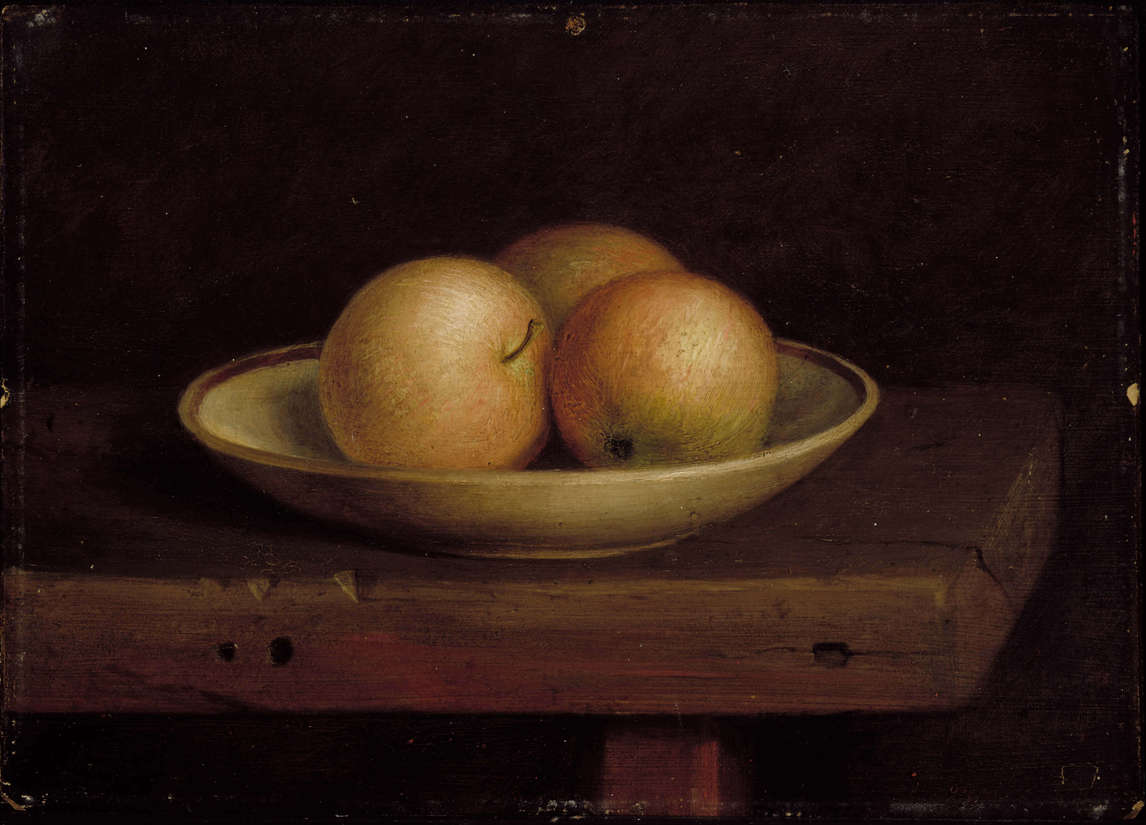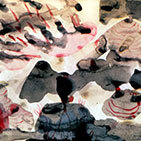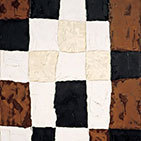Still Life: Pineapples and Pears 1941

Paul-Émile Borduas, Still Life: Pineapples and Pears (Nature morte. Ananas et poires), 1941
Oil on canvas, 49.9 x 60 cm
National Gallery of Canada, Ottawa

The still life occupies an important place in Borduas’s early work, reflecting the influence of his first teacher, Ozias Leduc (1864–1955), who often worked in this genre and occasionally used the trompe l’oeil technique. Here Borduas takes a pineapple, a pear, and grapes as subjects for his still life, differentiating himself from Leduc by including the exotic pineapple. Leduc painted apples and onions, as well as objects familiar to local farmers, such as candlesticks, or even books or a violin—but never anything exotic. Also, there is not even a remote hint of trompe l’oeil in Borduas’s painting. The table on which the fruit is arranged is set at a pronounced angle within the image plane and reveals the influence of Paul Cézanne (1839–1906).
The black outline with which he surrounds the objects in his composition possibly reflects the influence of Georges Rouault (1871–1958), whose work Borduas grew to admire during his early days in Paris. Often considered a lesser genre, the still life provides an ideal framework for formal explorations of volume, contour, and composition. It is not surprising that still life was a favoured genre among the Cubists.

 About the Author
About the Author
 More Online Art Books
More Online Art Books
 Acknowledgements
Acknowledgements